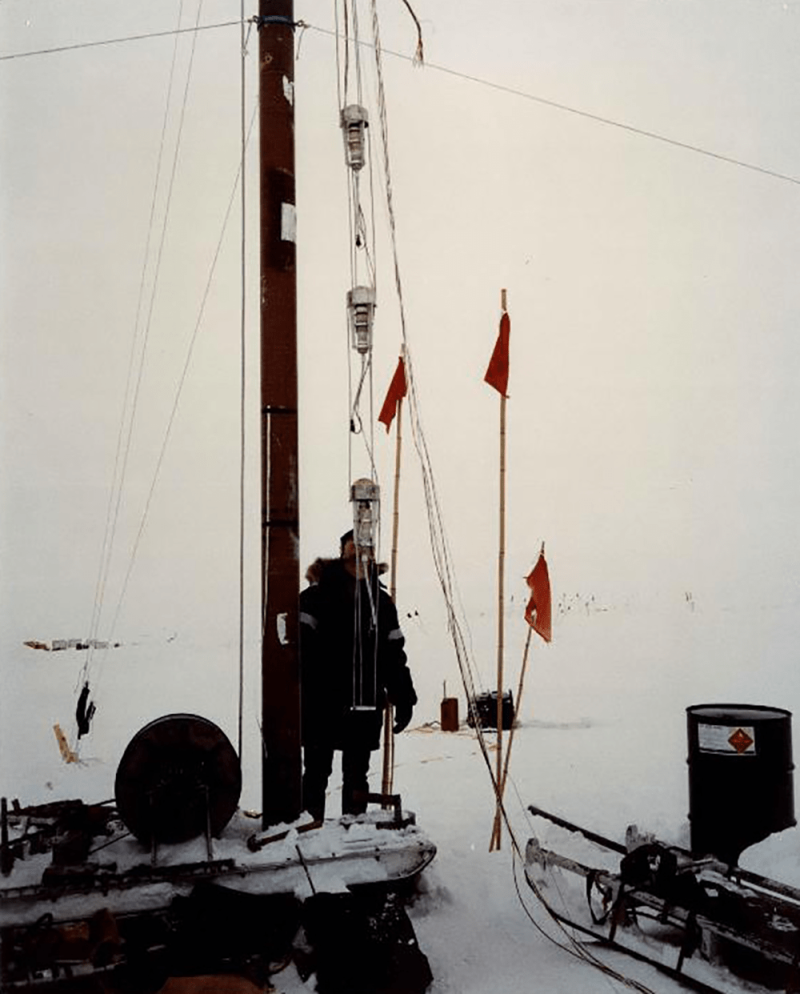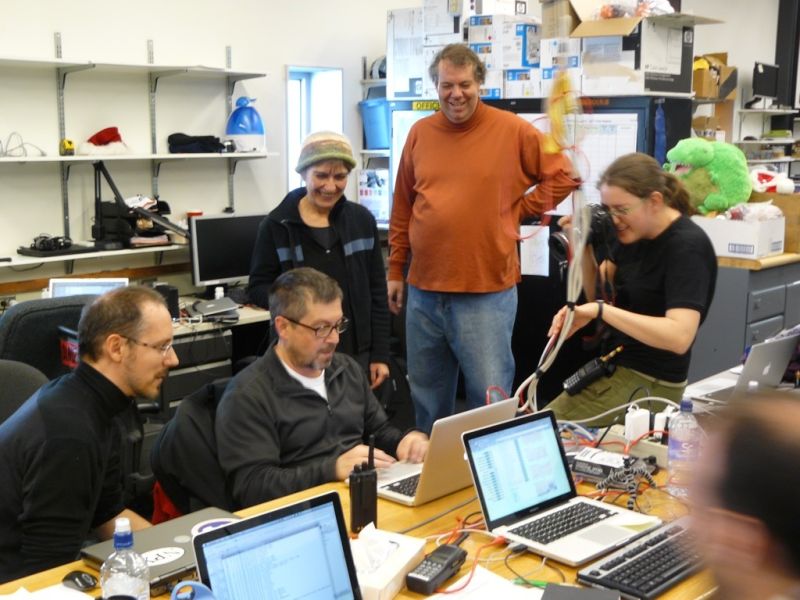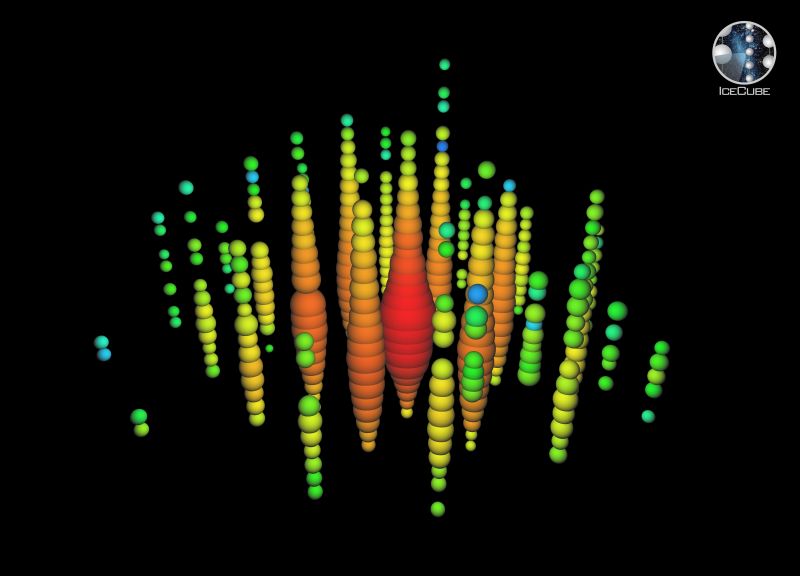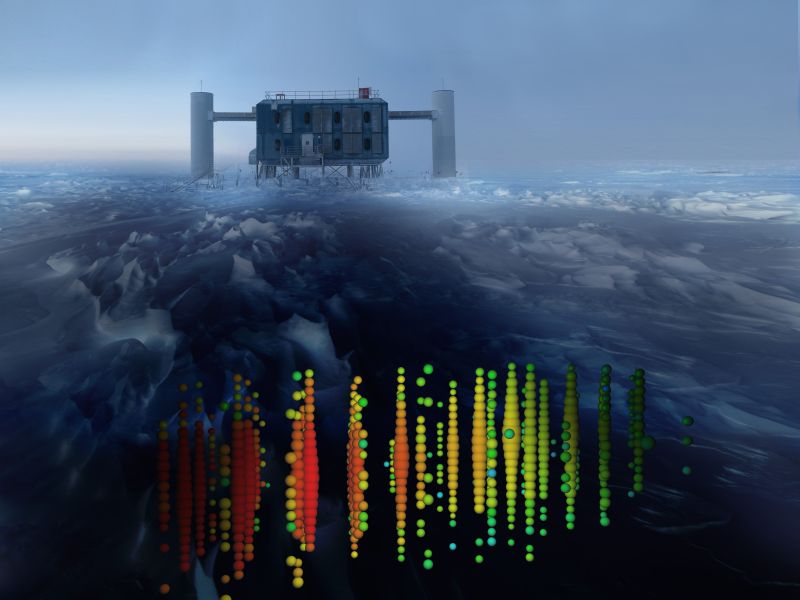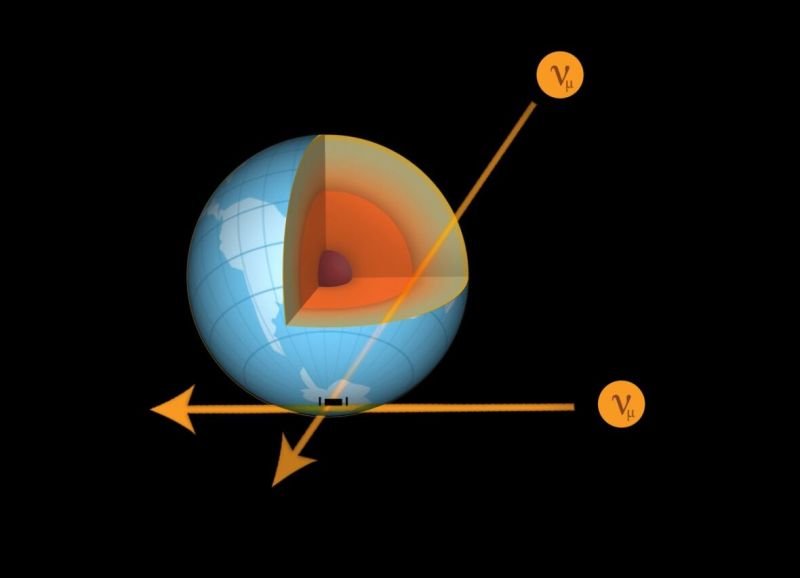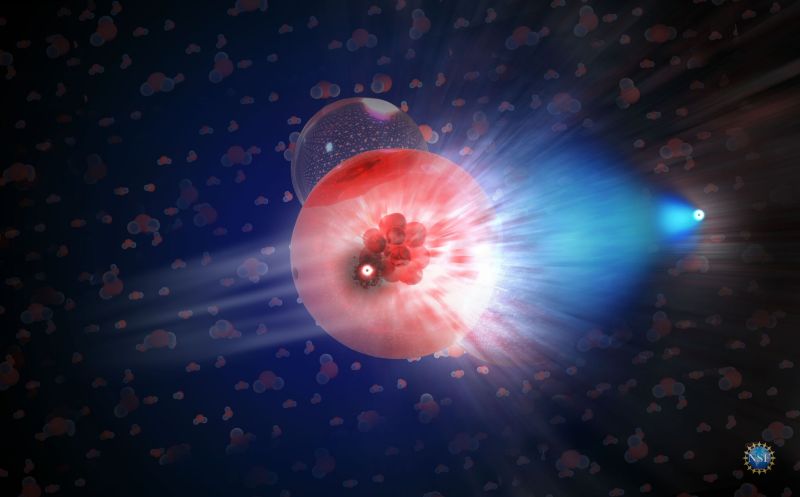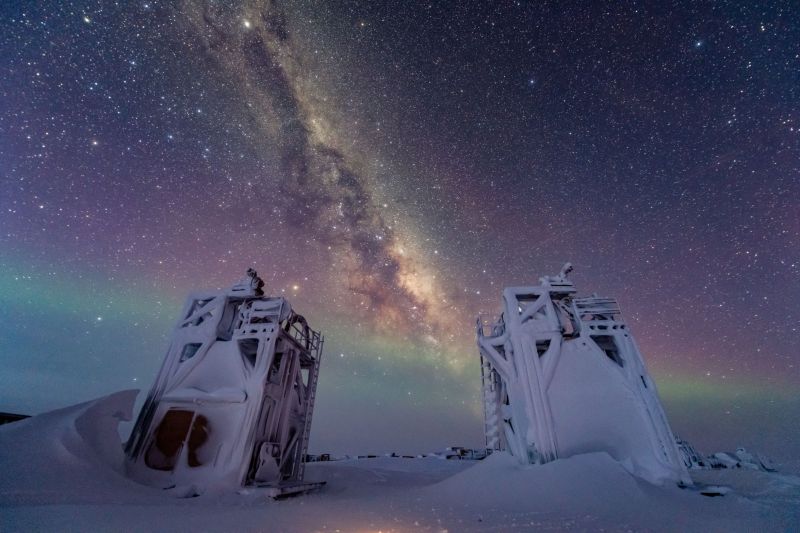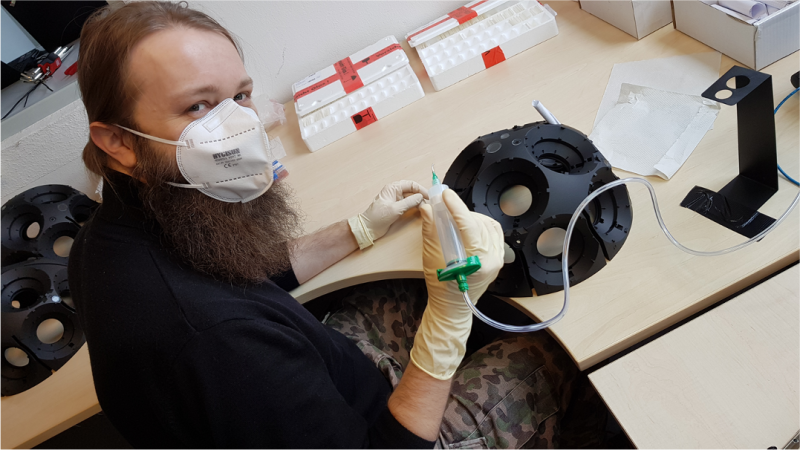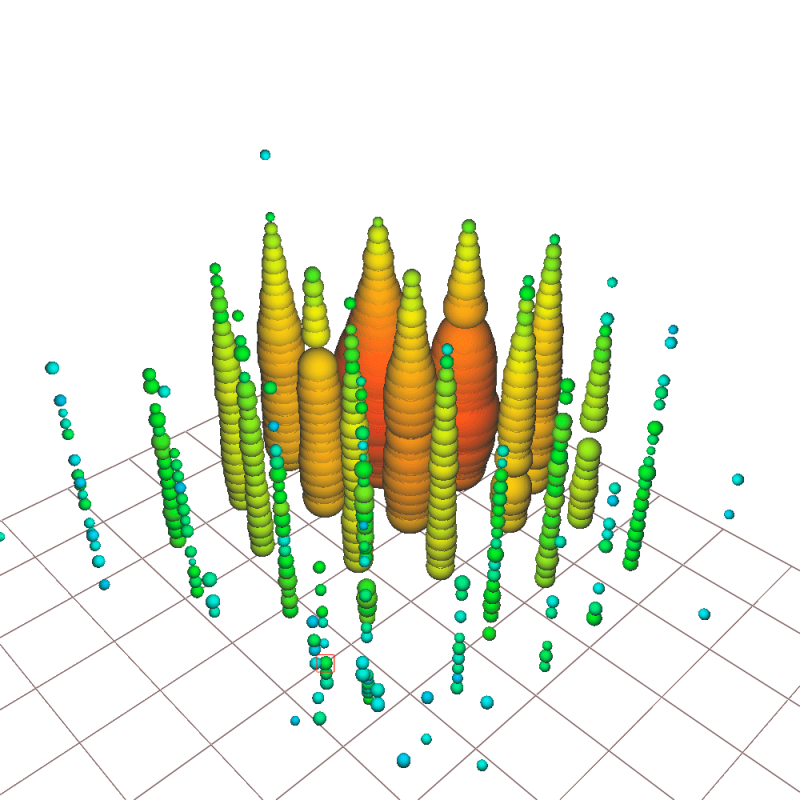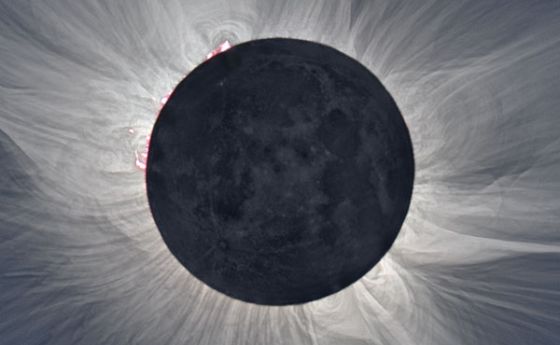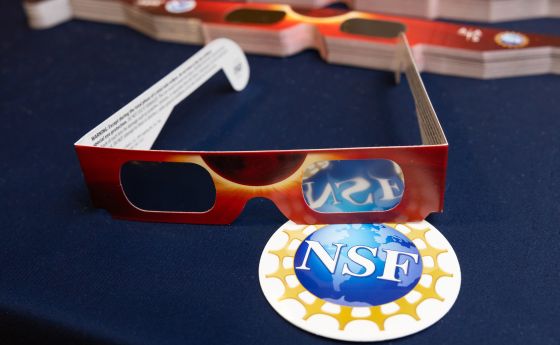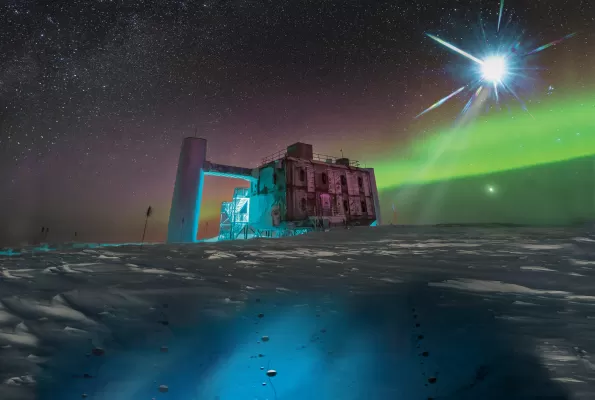
IceCube: A decade in review
On May 13, 2011, the U.S. National Science Foundation's IceCube South Pole Neutrino Observatory took its first set of data --known as a physics run -- as a fully configured facility. Since then, the facility has yielded groundbreaking results! In 2012, IceCube detected the highest energy neutrinos ever observed at that time. During its 10 years of operation, scientific breakthroughs enabled by IceCube have been published in over 150 papers in scientific journals. In celebration of the facility’s 10th anniversary, learn more about IceCube through images.
The beginning
It took seven years to construct the IceCube Neutrino Observatory, designed to search for nearly massless subatomic particles called neutrinos. However, planning began much earlier. In 1990, the proof of principle for IceCube, called AMANDA, was field-tested in Greenland. Fourteen years later, construction at the South Pole was ready to begin.
The final DOM
Because of the location at the Earth’s pole, construction activities could only take place for a few months each year during the Southern Hemisphere’s summer. On average, it took 48 hours to drill a hole for each of the 86 cables, each holding 60 digital optical modules. It took a further 11 hours to lower the cable into the ice. The final string of DOMs was deployed in December 2010. Five months later, the first data were collected from the full IceCube detector.
The first run
On May 13, 2011, IceCube took its first set of data -- known as a physics run -- as a fully configured facility. Just a few months prior, in January 2011, IceCube collaborators at the South Pole were conducting test runs to prepare, as shown in this photo.
Meet Bert and Ernie
In 2012, IceCube detected the highest energy neutrinos ever observed at that point. With estimated energies of about 1015 electronvolts, the two events were nicknamed Bert and Ernie by IceCube physicists. Shortly afterward, IceCube observed 26 more very high-energy events.
A neutrino’s global traverse
In 2015, IceCube announced a new observation of high-energy neutrinos that originated outside our solar system. The study confirmed the neutrinos’ cosmic origin, the presence of extragalactic neutrinos and the intensity of the neutrino rate. In addition, the sample used in the paper, when combined with previous IceCube measurements, became the most accurate measurements to date of the energy spectrum and neutrino-type composition of the extraterrestrial neutrino flux.
Neutrinos…interrupted
In 2017, research from IceCube showed that the Earth can stop extremely energetic neutrinos. Scientists found that as the neutrino energy increased, fewer neutrinos made it all the way through the Earth to the IceCube detector compared to those observed coming from less obstructed paths.
A multi-messenger discovery
In 2018, a neutrino from a blazar traveled across space and entered the ice of Antarctica. Just before reaching the IceCube detector, the neutrino collided with an atom's nucleus and produced a secondary particle -- a muon -- that moved at relativistic speed in the ice. This left a trace of blue light behind it that was detected by the photosensors in IceCube. This was the first evidence of a source of high-energy cosmic neutrinos. The result was bolstered by coincident measurements from other instruments, including optical, radio and X-ray telescopes, heralding a new era of multi-messenger astrophysics.
Under the night sky
Neutrinos are bombarding the Earth day and night, 365 days a year. This means that research at IceCube is conducted year-round. The two staff winterovers (people who spend winter at the poles) and their colleagues who keep IceCube running get incredible views of the night sky, the Milky Way and the southern lights during the austral winter -- a multicolored light show at the South Pole!
Approved for an upgrade
In 2019, NSF announced funding to upgrade the IceCube detector. The IceCube Upgrade project will add more than 700 new and enhanced optical modules to the 5,160 sensors already embedded in the ice. This upgrade will improve the resolution of all past and future IceCube data and significantly enhance IceCube’s lower-energy capabilities to study neutrino properties.
A 60-year-old theory proved
In 2021, IceCube announced the detection of a Glashow resonance event, a phenomenon predicted by Nobel laureate physicist Sheldon Glashow in 1960. This observance of a 6.3 PeV antineutrino, a neutrino’s antimatter counterpart, confirmed the Standard Model of particle physics at an energy a 100 times higher than current particle accelerator facilities.



